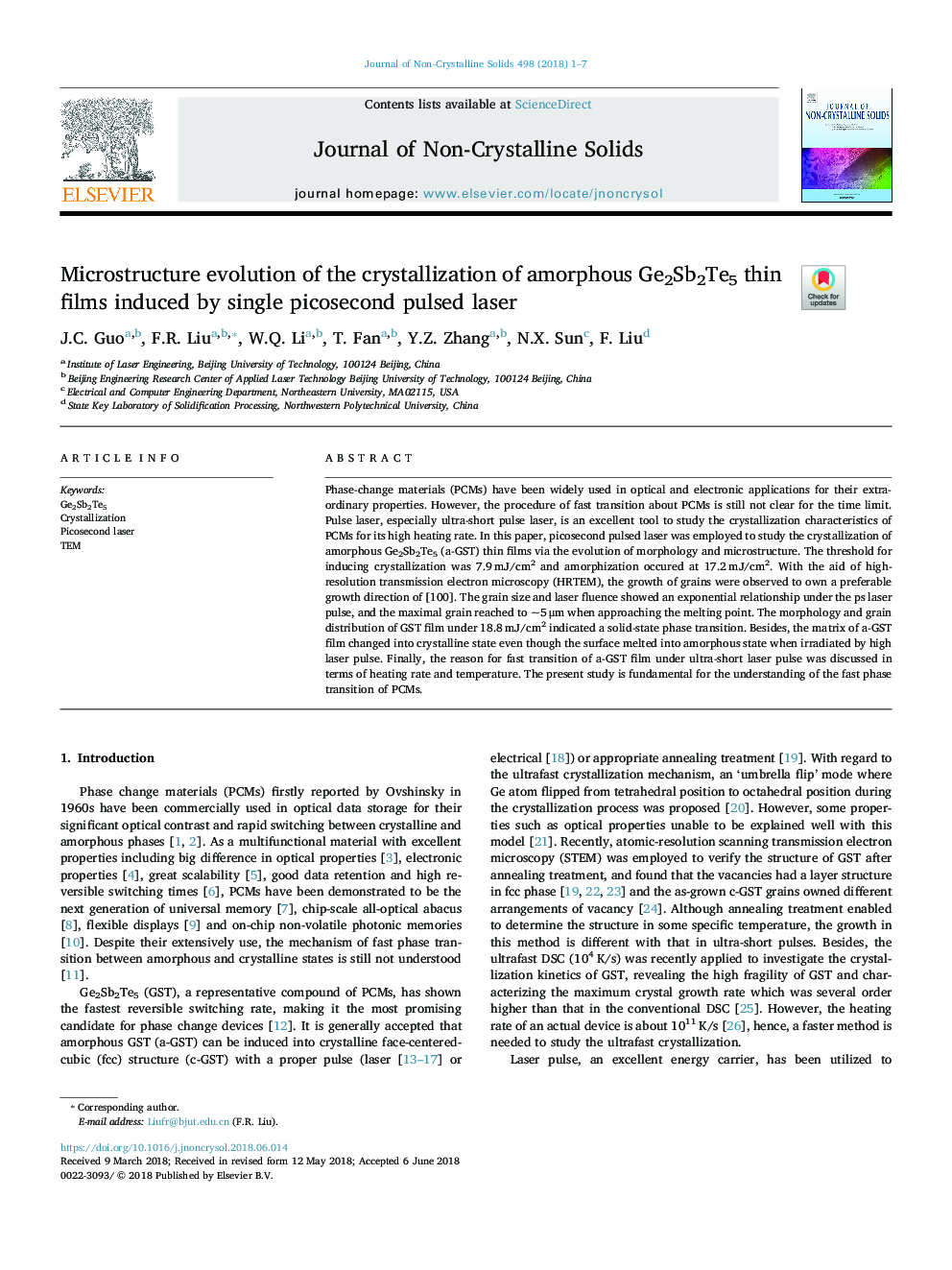| Article ID | Journal | Published Year | Pages | File Type |
|---|---|---|---|---|
| 7899556 | Journal of Non-Crystalline Solids | 2018 | 7 Pages |
Abstract
Phase-change materials (PCMs) have been widely used in optical and electronic applications for their extraordinary properties. However, the procedure of fast transition about PCMs is still not clear for the time limit. Pulse laser, especially ultra-short pulse laser, is an excellent tool to study the crystallization characteristics of PCMs for its high heating rate. In this paper, picosecond pulsed laser was employed to study the crystallization of amorphous Ge2Sb2Te5 (a-GST) thin films via the evolution of morphology and microstructure. The threshold for inducing crystallization was 7.9â¯mJ/cm2 and amorphization occured at 17.2â¯mJ/cm2. With the aid of high-resolution transmission electron microscopy (HRTEM), the growth of grains were observed to own a preferable growth direction of [100]. The grain size and laser fluence showed an exponential relationship under the ps laser pulse, and the maximal grain reached to ~5â¯Î¼m when approaching the melting point. The morphology and grain distribution of GST film under 18.8â¯mJ/cm2 indicated a solid-state phase transition. Besides, the matrix of a-GST film changed into crystalline state even though the surface melted into amorphous state when irradiated by high laser pulse. Finally, the reason for fast transition of a-GST film under ultra-short laser pulse was discussed in terms of heating rate and temperature. The present study is fundamental for the understanding of the fast phase transition of PCMs.
Related Topics
Physical Sciences and Engineering
Materials Science
Ceramics and Composites
Authors
J.C. Guo, F.R. Liu, W.Q. Li, T. Fan, Y.Z. Zhang, N.X. Sun, F. Liu,
